The Mizrahi feminist archiving the ‘unspoken histories’ of Israel-Palestine
Sapir Sluzker-Amran talks about starting a civic archive that centers disadvantaged groups and challenges the dominant Israeli narrative.
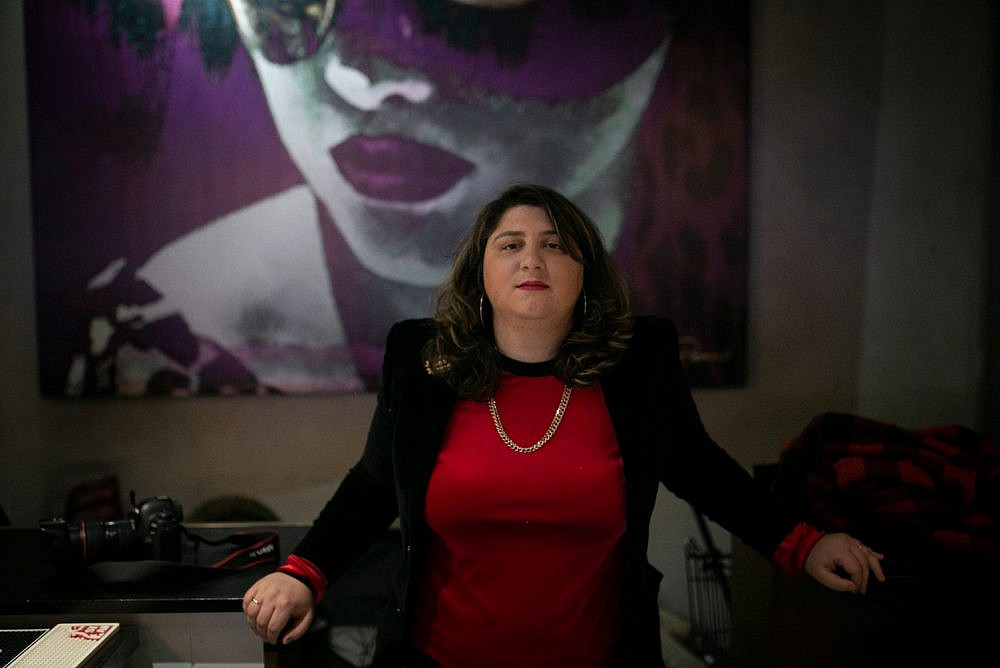
 In 2017, during a brief visit to New York, Sapir Sluzker-Amran came across the Interference Archive — a radical project collecting materials related to progressive activism. Seeing the accumulation of undertold histories and the ways in which they were being made accessible to a general audience made Sluzker-Amran, a human rights lawyer and Mizrahi feminist activist, realize that there is no equivalent archive in Israel-Palestine — and she promptly set about creating one.
In 2017, during a brief visit to New York, Sapir Sluzker-Amran came across the Interference Archive — a radical project collecting materials related to progressive activism. Seeing the accumulation of undertold histories and the ways in which they were being made accessible to a general audience made Sluzker-Amran, a human rights lawyer and Mizrahi feminist activist, realize that there is no equivalent archive in Israel-Palestine — and she promptly set about creating one.“We know almost nothing about the history of [political and social] struggles in Israel,” Sluzker-Amran says. “The materials we have and the narrative we learn at school are those of the Zionist establishment and the government. It’s a case of history being written by the victors.”
The project, which began in late 2018, is called “Archi-Parchi: The civic archive of social struggles in Israel” (the Hebrew title is a jab at derogatory stereotypes about Mizrahim, or Jews of Middle Eastern and North African origin). Housed at the College of Management Academic Studies in Rishon LeZion, the archive is driven by a non-governmental, non-institutional, and community-focused ethos.
The initiative originally prioritized the public housing struggle, Mizrahi — in particular Mizrahi feminist — struggles, and queer struggles. The archive’s Facebook page features a public call for materials and Sluzker-Amran has approached and interviewed veteran activists. Sluzker-Amran, who has been active on all these fronts over the past decade, emphasizes the importance of beginning by centering these issues. “We’re collecting all kinds of materials, but we started with those because we feel that the representation of those groups is lacking in mainstream media and in existing archives,” she says.
“It’s also saying to the public that while it would be very easy for us to collect materials from high-profile gay white men living in Tel Aviv, we don’t want to start out like that. We’ll accept those materials, of course, but we want to send a message that we’re starting with disadvantaged communities, so they’ll be comfortable sharing their materials.”
Key to collecting and assembling archival items, Sluzker-Amran says, is recognizing the sometimes-extractive role that documenting the histories of disadvantaged communities can play. “In Israel, most of the documentation we have about underprivileged populations is in academic articles, and a lot of them are in English,” she explains. “So, a lot of the history is inaccessible to the public, even if the article is in Hebrew. And it’s especially inaccessible to the communities that these academics write about — either because they’re not in academia, or you need to pay to get access to the articles. The idea of an archive like New York’s Interference Archive, where you can feel the materials and learn from them, where there are workshops, debates, and books, which is community-based — it was a revelation.”
And creating Israel’s own version of this archive is a responsibility Sluzker-Amran isn’t taking lightly. She acknowledges that the decisions she takes about how to present the archival materials will affect how the histories of social and political struggles are told. The goal, she says, is to “create that narrative on the side of the people who fought.”
The following interview has been edited for length and clarity.
Can you talk a bit about the need for a civic archive in Israel-Palestine?
“There aren’t really many alternative archives in the country, and there isn’t one that is officially trying to collect materials and unspoken histories of social and political struggles in Israel. There are several tiny archives that, for now, have no website — for example, a feminist and lesbian archive in Haifa, and another one about the history of the LGBTQ community in Haifa, along with an archive that deals with the Yemeni and Mizrahi baby kidnapping affair. But there isn’t really a main source that collects materials from veteran activists — so many of whom had items that were a treasure for other activists, but that were thrown away or damaged over the years because no one took care of them and made them accessible to the public.
“Looking at these materials also helps us as activists now to learn how we can better deal with current issues like police brutality. We want people to use them for activism.”
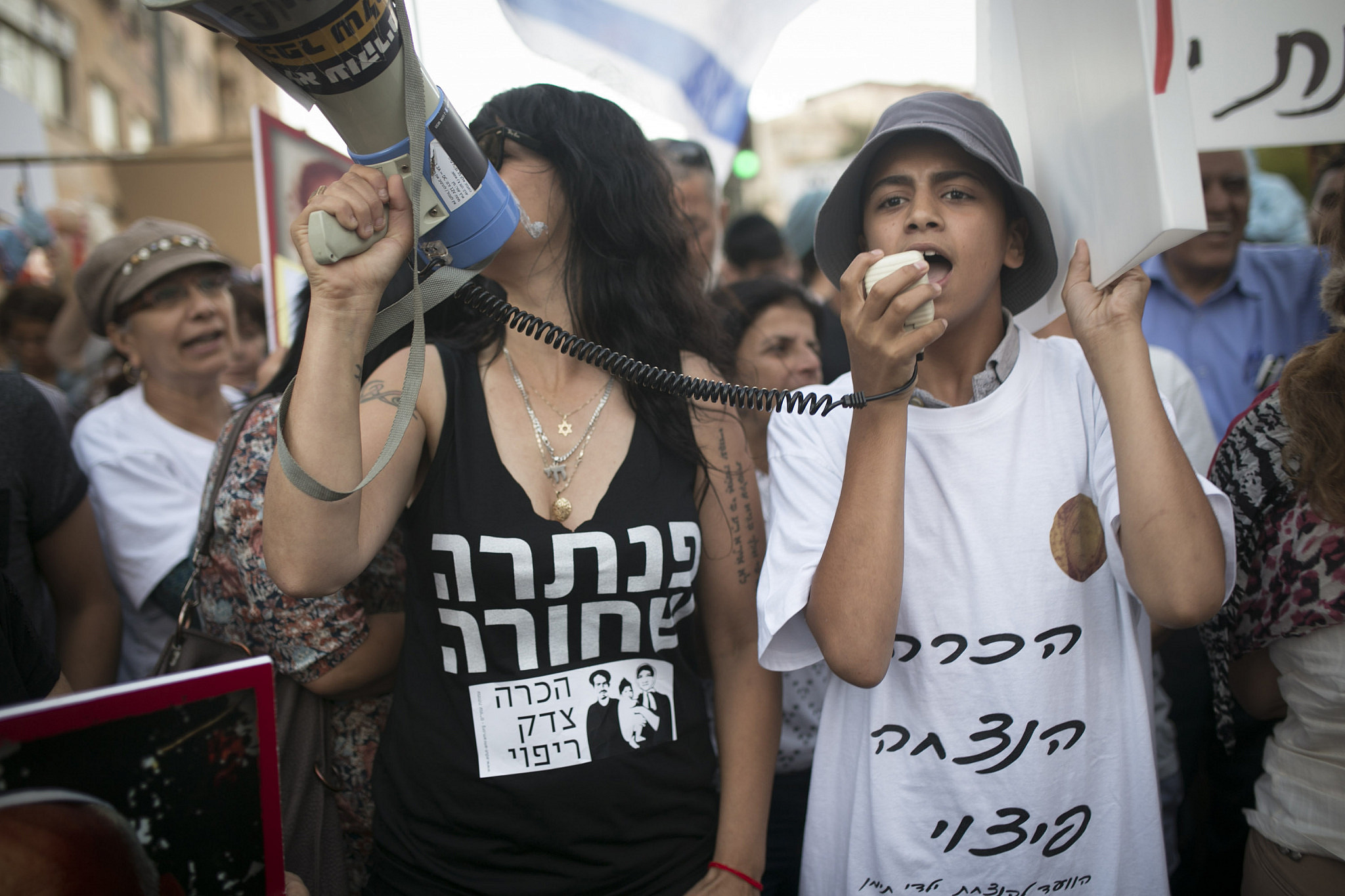
“I have a huge political responsibility in assembling these archives, because I’m shaping the narratives in the way I’m deciding to catalogue the materials. This is part of a big debate about how you archive. If you ask people from an official archive, they’ll say it’s not a political decision, and that they’re just categorizing things according to the facts. But they’re shaping a narrative.
“Take an archived picture where people are clashing with the police during a protest. If it’s in a mainstream archive, the description will be, ‘Clashes with the police,’ or ‘Riots,’ or something like that. Our archive, instead, will say, for example, ‘Police brutality against a group of feminists.’
“As another example, let’s take a document related to a demonstration against a settlement [in the occupied West Bank]. In the Israel State Archives, they’ll say something like, ‘A protest against a settlement in Judea and Samaria.’ I would write, instead, ‘A protest in the occupied territories,’ or ‘against the occupation.’ By picking those words, you’re shaping the narrative.
“It’s my responsibility as a civic archivist to tell [activists’] stories. When people are researching or trying to understand a period of time or a specific struggle, they’ll actually get information about what happened from the activists and the disadvantaged communities who struggled, and not just the official version of history from the state.”
You mentioned that there’s a lack of information and awareness about the LGBTQ struggle in Israel. That might be obvious to you and me, but could potentially be surprising to people outside the country because they’re so used to hearing a particular narrative about Israel and gay rights. How can this archive challenge some of those narratives?
“I want people to acknowledge and learn more about intersectionality inside the queer struggle, but also to see the connections and the solidarity between struggles. For example, we’re planning an event on the history of two movements — one called Black Laundry, a queer anti-occupation group which started 20 years ago. They came and protested at official Pride events, and talked about the occupation, about trans rights, about the connections between being vegan and being queer, about the Mizrahi struggle. They were active for a few years, and there are groups doing the same thing today. They talk about the occupation and about how the presentation of Israel as a ‘gay heaven’ in the Middle East is not correct, and is only used for propaganda and pinkwashing, when there are queer and trans people who are dying without support.
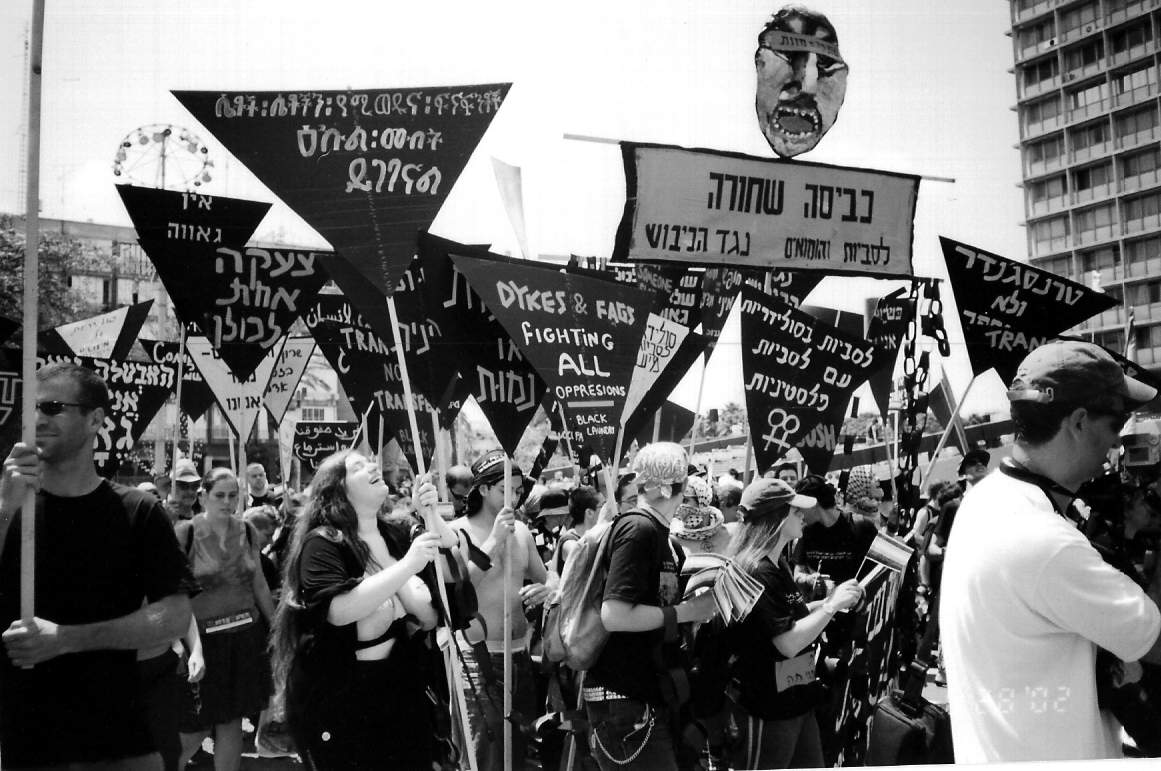
“Abroad, there are one of two narratives. One is that Israel is an amazing place for gay rights, which of course is always said in comparison to other countries in the Middle East. This narrative features lots of success stories — for example, the one about a trans officer in the Israeli army. The other narrative is the narrative of pinkwashing. But in the middle of these two, there are stories which aren’t directly related to the occupation, or to how privileged gay Ashkenazi men here are. There are many communities and activists whose stories no one hears. When the main narrative is that there was a revolution [in gay acceptance], and so much success in the queer community — going from rejection to everyone loving us — then no one wants to tell stories that say something else.”
Can you pick out a few of the items you’ve collected so far that are particularly meaningful, or tell a story that people don’t know about and really should?
“We have materials about the first ever Mizrahi feminist conference, which took place in 1996. The only speakers were Ethiopian, Palestinian, and Mizrahi women. Ashkenazi women were welcome to join, but they weren’t onstage. We did an event about it a few months ago, and we invited some of the women who were part of that conference to talk about it and the story behind it, as well as what happened afterwards. A lot of the women in the crowd — young, feminist activists — were nodding, because they felt very connected to the stories women told, even though those things happened nearly 25 years ago. Women are in the same situation, feeling that they don’t belong to women’s peace movements because they’re often the only non-Ashkenazi women in the room. Or they might be volunteers but wouldn’t be able to be leaders. Listening to these women, it felt like they were talking about the present. So the materials we have from that time are very meaningful to young Mizrahi activists.
“They explain that you have to refuse to be the only Mizrahi on the panel. If there’s a group of Ashkenazim and you’re the only one appearing as a Mizrahi, you have to insist on bringing a sister with you. When we started to read about it, it became a tactic that a lot of activists started doing — refusing to come unless there would also be Ethiopians, Palestinians, queers, women with disabilities. You can have an Ashkenazi representative, but that’s it.
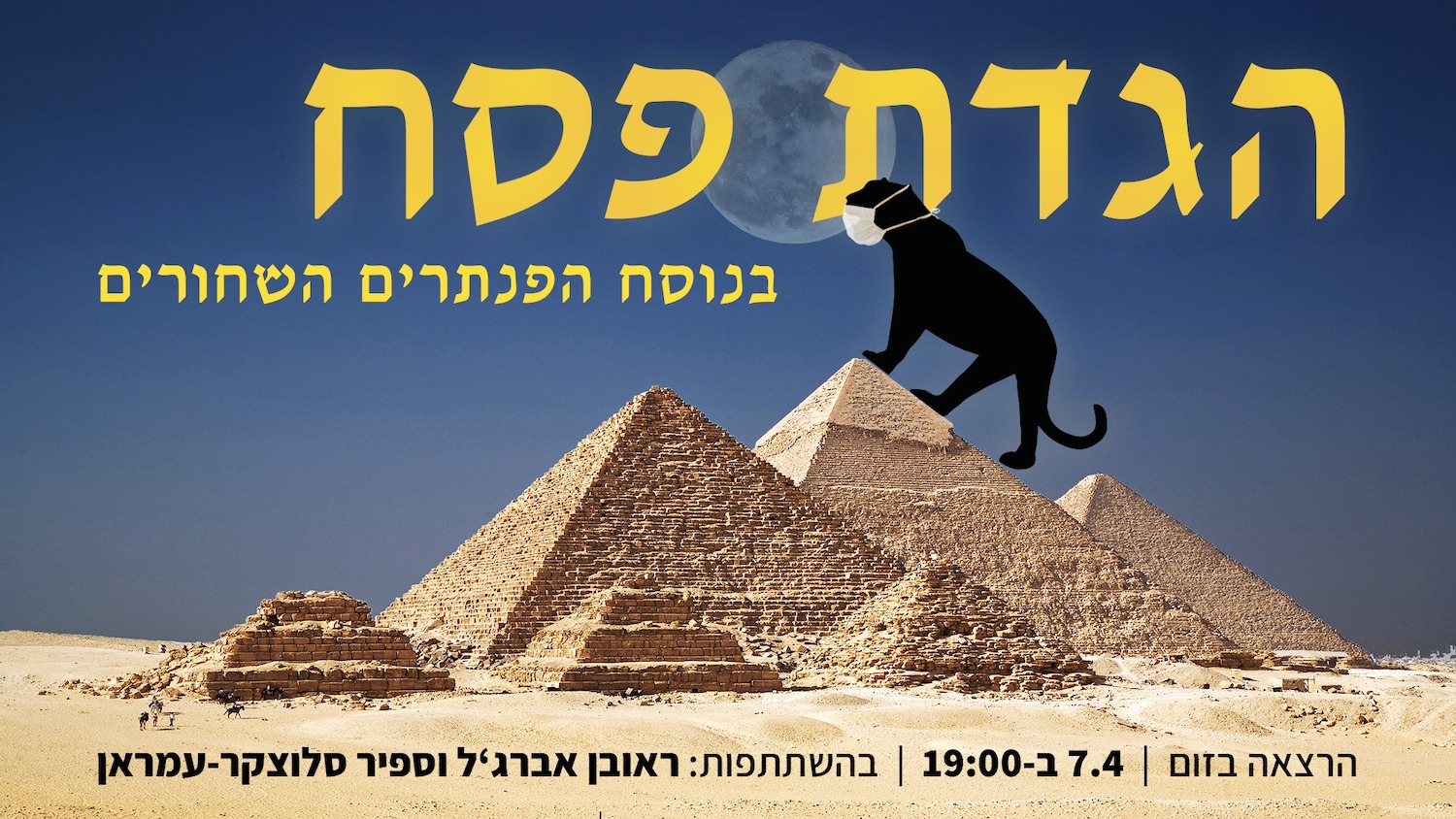
“We also have materials from the Mizrahi Democratic Rainbow, one of the most important Mizrahi organizations. In 2004, they held a conference about Ashkenazim, and it was the first time that Palestinians and Mizrahim discussed Ashkenazi identity in that way. It’s really eye-opening about who can do research and what they get to explore. It opened the question of whether being Ashkenazi in Israel is an identity, or simply Israeli, with the rest of us just being a bunch of identities. No one knows about that conference, but it’s recent history.
“We also have flyers from a political party founded at the beginning of the 1990s, HaTikvah. They were a group of activists focusing on different issues, and it was considered a Mizrahi party, but we got the materials from the second person on the party’s list [Leah Shakdiel] — and she was an Ashkenazi, ultra-Orthodox woman who was active on the Israeli periphery. The party got the support of Mizrahi rabbis, and did a lot of meetings in Mizrahi spaces, and this candidate was part of it as an Ashkenazi. It’s not that unique to [create this kind of mixed party] now, but 30 years ago it was much more radical.”
What have you learned about activism in the course of collecting materials?
“When I interview activists I ask them what they think worked in their struggles, as well as what the challenges were, and what we shouldn’t do today. People say that if your struggle is getting a lot of attention and the government approaches you and offers you to be part of a committee and says it wants to help, you need to resist. It’s the end of the struggle, and it’s been done consistently to demolish social movements by taking some people and giving them positions with money, or inviting them to be part of a special committee.”
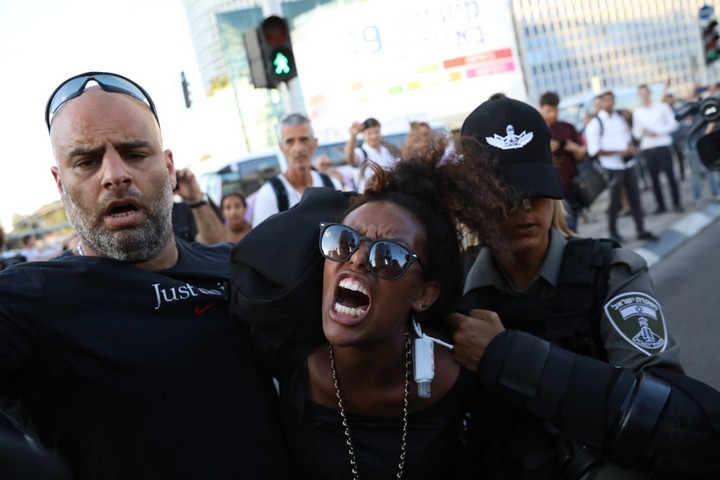
“One example is from the 1970s and ’80s, when there was a struggle in Jerusalem’s Katamon neighborhood for public housing and against anti-Mizrahi discrimination. The activists fought against Jerusalem’s city hall for years, and then the city told the activists that they could be part of a committee that works with the city to improve the situation of the neighborhood. Some activists were also offered positions in the [state] public housing company [Amidar]. In the end, people wasted all their time talking in committees while nothing changed and no one was left to continue the movement.
“A more recent example is from 2015, when there was a wave of protests led by Ethiopian Israelis against police brutality and discrimination. The government decided to establish an official committee to discuss the situation of Ethiopian Israelis, and for a few years that undermined the movement. The state took a lot of people to act as advisors while promising a lot. That caused divisions in the community between people who wanted to continue protesting and others who wanted to wait to see the results of the committee. In the end, many of the activists’ demands weren’t met.
“The same thing happened with the 2011 social protests, and the leaders of that movement warned people in 2015 that the same thing would happen. So we need these histories so we can learn from them.”


No comments:
Post a Comment
Note: only a member of this blog may post a comment.